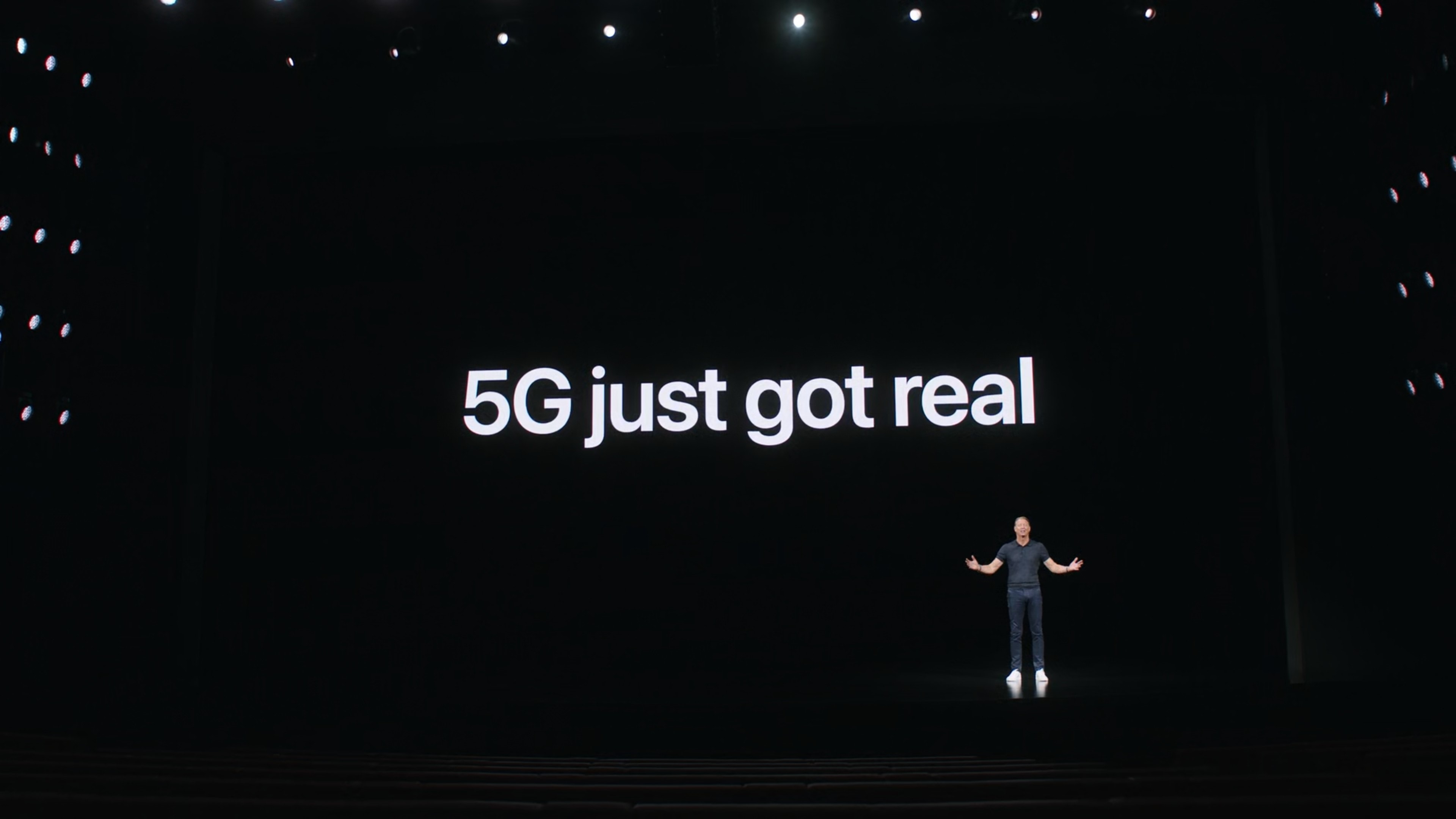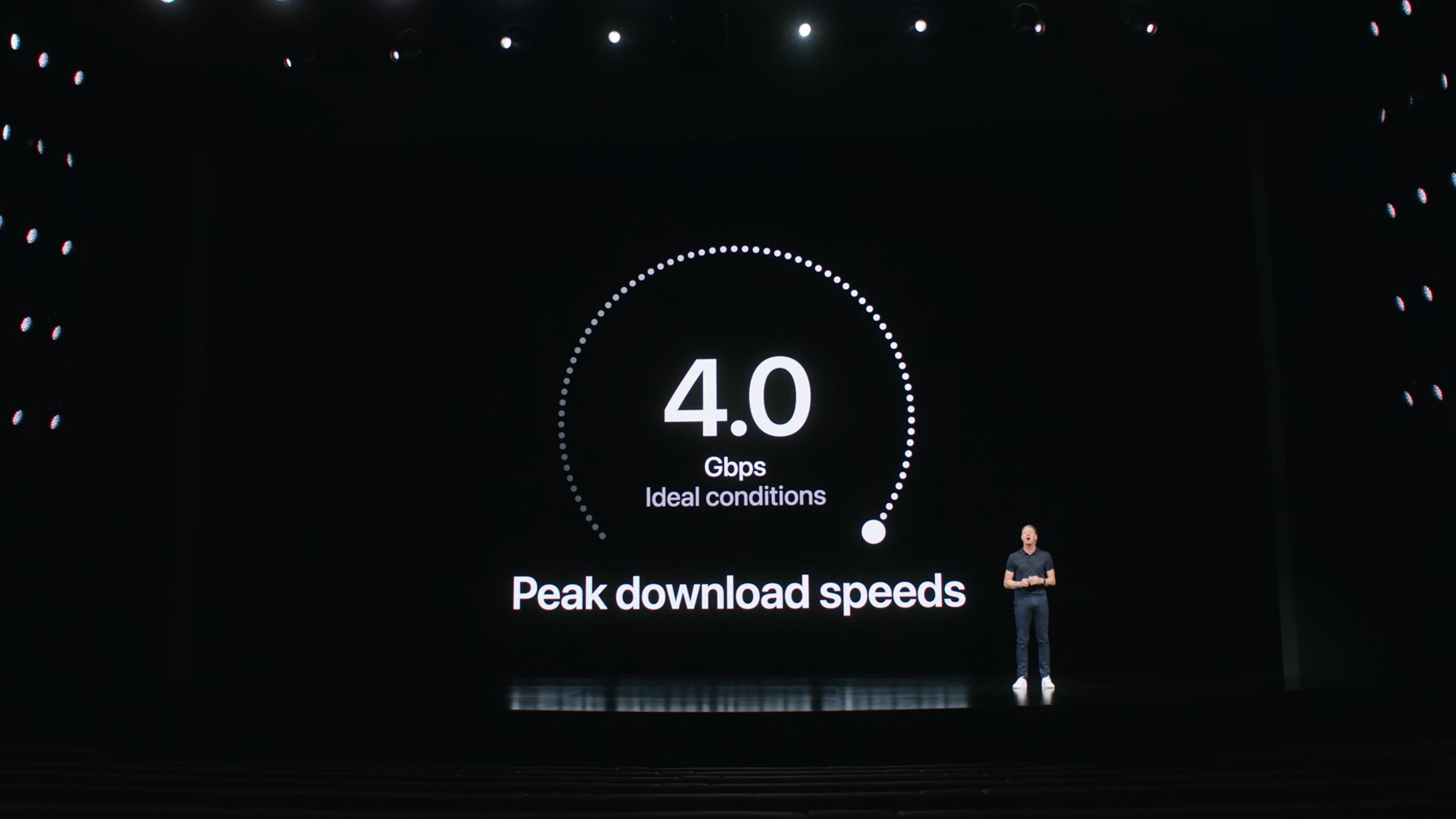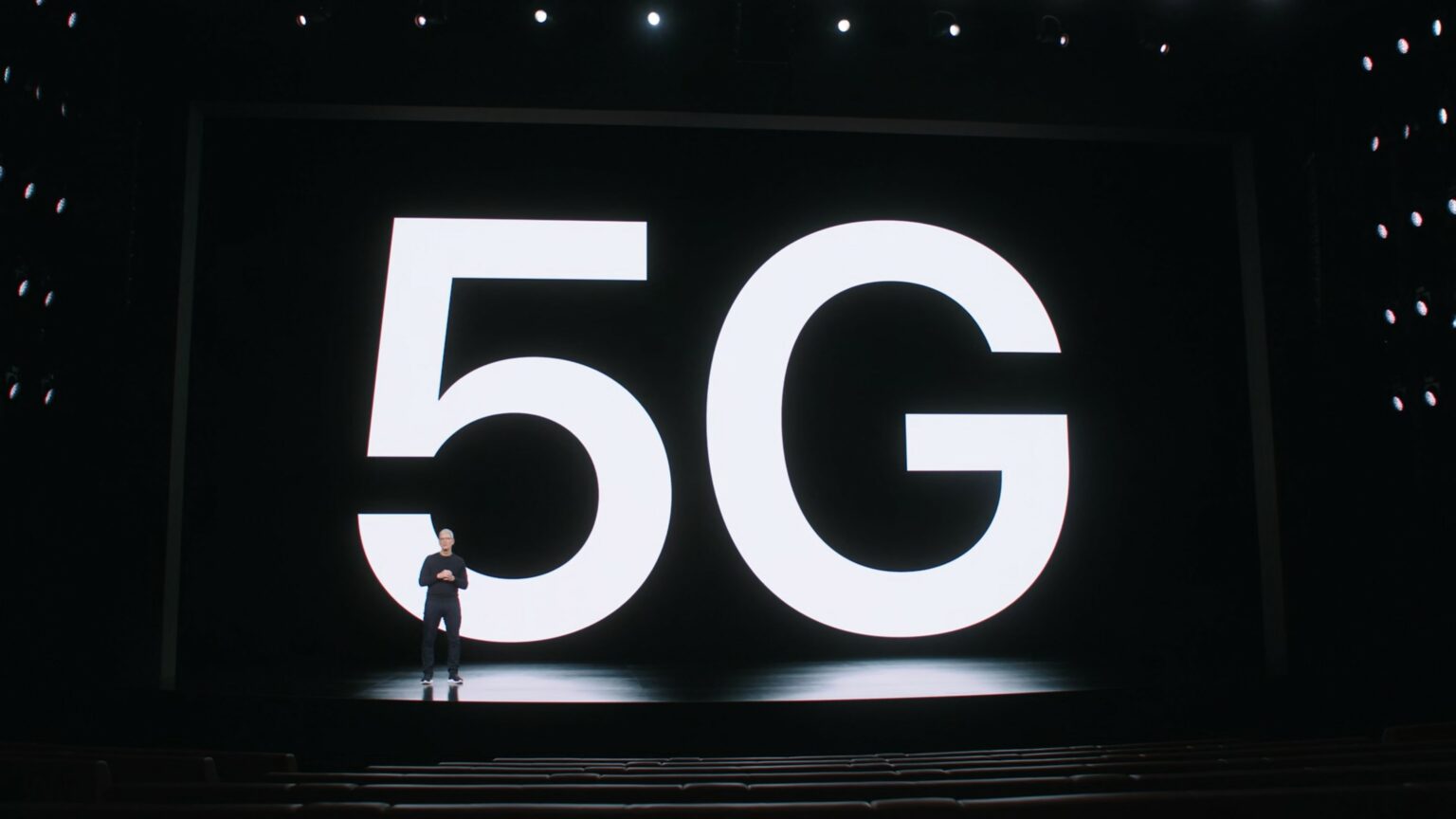One of the biggest reasons to upgrade to iPhone 12 this year is for its 5G connectivity. It promises to be significantly faster than the 4G networks we’ve become accustomed to, making things like mobile gaming, content streaming, web browsing — basically everything you do online — better than ever.
You should be excited, but not too excited. 5G can be as spectacular as Apple led us to believe during this week’s iPhone 12 unveiling … but only if you can get good 5G coverage — and the right kind of 5G connection.
Allow us to explain what you need to know about 5G.
“Today is the beginning of a new era for iPhone,” said Apple CEO Tim Cook during Tuesday’s “Hi, Speed” event. “5G will bring a new level of performance for downloads and uploads … and so much more.”
5G promises to be up to 25X faster than 4G, giving you the ability to download movies, games, and more in a matter of seconds. For some of us, it will be faster than even home broadband connections, with even lower latency for unparalleled performance during online gaming sessions.
Apple talked a lot about the transformative power of 5G on Tuesday. There’s a lot Apple didn’t tell us about 5G during its event, however. The main thing: Not all 5G technologies are created equal. There are a number of different types of 5G, and your experience will depend entirely on where you live and what carrier you subscribe to.
The sad truth is that many of us may not experience 5G on iPhone at all — at least not for several years. And many of those who do enjoy 5G connections will be disappointed to find that the speeds they actually get are nowhere near what they were promised.
What is 5G on iPhone?
5G is the successor to 4G — a new standard for cellular networks. And, like 4G, it comes in many flavors. One, mmWave 5G, is considered the best for data speeds, but it doesn’t travel well. Another, Sub-6GHz 5G, delivers far greater reach and better penetration, but it’s a lot slower.
With great coverage, mmWave devices can reach download speeds in excess of 4 Gbps. In comparison, the slower Sub-6GHz 5G can reach download speeds of up to 900 Mbps. Current 4G networks max out at around 300 Mbps (and rarely hit that).
The good news is that the entire iPhone 12 lineup has the ability to connect to the fastest mmWave networks … but only in the United States. In other countries, such as the U.K., where carriers don’t offer mmWave connectivity yet, you get Sub-6GHz 5G instead. And that’s all you’ll ever get with iPhone 12, because international models sold outside the United States don’t pack the hardware necessary to support mmWave networks.
Even in the United States, however, it’s unlikely most people will see anything close to maximum 5G speeds.
The state of 5G coverage

Photo: Apple
A June report from Opensignal revealed that Verizon has been offering the fastest 5G connection in the United States, but it topped out at under 495 Mbps. On average, Verizon 5G customers were seeing speeds more like 42.6 Mbps, while AT&T customers were seeing 41 Mbps.
What’s more, 5G connections can be hard to come by unless you live in a major city. Opensignal found that T-Mobile offered the best 5G coverage, with 22.5% of subscribers enjoying a 5G signal, while AT&T hit just 10.3%, and Verizon reached a disappointing 0.4%.
This will change — and quickly. Now that iPhone supports 5G, carriers will almost certainly step up their efforts to expand coverage. During the Apple keynote this week, Verizon confirmed plans to make its 5G network available “nationwide” for more than 200 million customers.
As of this week, Verizon offers 5G in 1,800 cities across the U.S., making faster data more accessible than ever before. The catch? It is expanding by taking advantage of slower Sub-6GHz 5G technologies, with faster mmWave coverage — which it brands as “5G Ultra Wideband” — still exclusive to just 55 cities.
The state of 5G is typically worse, or even nonexistent, in other countries. EE offers the best coverage in the U.K., with support for 63 major towns and cities. Rogers in Canada promises to reach a total of 60 markets by the end of 2020.
What should you expect from 5G?

Photo: Apple
What does all this mean for the average iPhone customer? In a nutshell, you should temper your expectations when it comes to 5G speed and coverage. You likely won’t see 5G at all if you live outside a major city. And even when you do, it probably won’t be as fast as you hoped.
So long as you know this before you buy iPhone 12, you shouldn’t be too disappointed. And again, it won’t always be this way. We’re likely to see big improvements in 5G coverage in the United States and elsewhere over the coming months and throughout 2021.
There’s one other thing you should know about 5G on iPhone 12: Even when 5G is available, your iPhone won’t always use it. In an effort to be efficient, iPhone 12 will rely on super-speedy 5G connections only when it really needs them, like when you’re streaming or downloading.
Apple calls this “Smart Data Mode,” which it says “extends battery life by intelligently assessing 5G needs and balancing data usage, speed, and power in real time.”
Still, there’s no question that 5G is the future of cellular networking. It’s just a question of when, exactly, that future will truly arrive.


